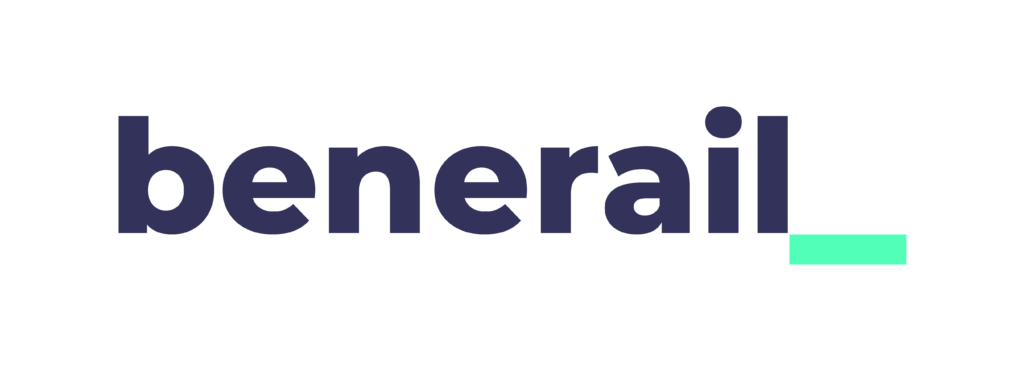
You can buy train tickets directly from the operator or through a reseller. The reseller is typically slightly more expensive (3-5%) but can provide an easier booking experience, especially if you travel with more than one operator.


These operators provide a complete journey either as a direct connection or through their partners. Even if a change of trains is involved, it’s all part of a single itinerary managed by the same train company or its partners, offering a smoother and more coordinated travel experience.

Some operators don’t run direct trains the whole way, but they serve either the departure or arrival station. In many cases, you can combine two of these operators to complete your journey by changing trains along the way. This is often a flexible and budget-friendly way to travel — especially if you’re comfortable piecing together your own itinerary.
Just keep in mind that these are separate journeys, which means a delay on the first leg could cause you to miss the second without automatic compensation or rebooking. It’s a great option for confident travelers who don’t mind a bit of extra planning.





Flixbus is not a rail operator; it is actually a long-distance bus service provider. As of my last update, there were no direct train services operated by a company named Flixbus, from Copenhagen to Oslo. Typically, one would use rail services such as DSB (Danish State Railways) and SJ (Swedish Railways) for most of the journey, with potential connections, as they are the main operators in Denmark and Sweden. Travelers should expect a comfortable journey with modern amenities on these trains, including Wi-Fi, power sockets, and dining options. Customer support is usually available at staffed stations and via online resources, including apps and websites. For any specific travel plans, it is recommended to check the latest schedules and details directly with the train operators or trusted travel booking platforms.
When traveling by train from Copenhagen to Oslo, the Interrail Global Pass is valid for this journey since it covers multiple countries, and can be used by residents of either Denmark or Norway. However, the Interrail One Country Pass would not be applicable for this cross-border journey as it covers only travel within a single country. The Eurail Pass is also valid for this journey, specifically for those who are residents outside of the EU.
Upon arriving in Oslo by train, you will find a well-connected public transportation system to navigate the city. The Oslo Metro, known as the T-bane, is a convenient option with six lines covering most of the city and suburbs. Trams are another efficient way to explore, especially in central areas, with a network that connects with metro and bus services. Buses complement the metro and tram routes, reaching areas not covered by other forms of public transport. For more personalized options, taxis are widely available and can be hailed on the street, found at taxi ranks, or booked via phone or app. Ridesharing services like Uber also operate in Oslo, offering another flexible choice for getting around. Lastly, consider purchasing an Oslo Pass, which grants you unlimited travel on public transportation, free admission to many attractions, and discounts on various activities.
Oslo, the picturesque capital of Norway, is well-connected by rail to several domestic and international destinations. Domestically, Oslo offers several popular train routes, the most prominent being the Bergen Line that links Oslo to Bergen. This journey is renowned for its breathtaking scenery, traveling across the Hardangervidda plateau and taking about seven hours. Another key route is the Dovre Line that connects Oslo to Trondheim, offering a scenic passage through national parks and covering the distance in roughly seven hours as well. The Southern Line, or Sørlandsbanen, is a great way to reach Kristiansand and Stavanger, with travel times of about five to eight hours, depending on the final destination.
Internationally, the most prominent connection is the route to Stockholm, Sweden. Operated by SJ, this journey typically takes about five to six hours through beautiful Nordic landscapes, and is a well-traveled route for those visiting both Scandinavian capitals. For travel to Copenhagen, Denmark, travelers can take a train from Oslo to Gothenburg and then connect to the direct train to Copenhagen, a journey which altogether takes around eight to nine hours. These rail connections provide efficient and scenic options for both short and long distance travel, making train travel a popular choice for those exploring Norway and its neighboring countries.
The best time to visit Oslo is generally during the late spring and early summer, specifically from May to early July, when the weather is mild and enjoyable, with temperatures ranging from 15 to 22°C (59 to 72°F). This period also benefits from long daylight hours, allowing visitors to explore the city extensively. Prices may be slightly higher as this is a popular time for tourists, but the pleasant weather and natural beauty of blooming parks and gardens make it worthwhile. Additionally, several festivals, such as the Norwegian Constitution Day on May 17th and the Oslo Medieval Festival in June, offer rich cultural experiences. Alternatively, early autumn, particularly September, provides a balance between milder temperatures and fewer crowds, and it’s often a slightly cheaper period to visit compared to peak summer months. Exploring Oslo by train is especially scenic during these times, as the landscape is vibrant and lush. Winter, from November to March, is ideal for those interested in winter sports and the magical appeal of a snowy Oslo, but the weather can be quite cold, with temperatures often dropping below freezing. However, this is generally the off-peak season, which typically means lower prices on accommodations and activities besides Christmas and New Year. Consider your preferences for weather, activities, and budget to determine the ideal time for your visit.
When traveling from Copenhagen to Oslo by train, it is important to pack a few key items to ensure a comfortable journey and a successful stay. Start with your passport or national ID card, as this is essential for crossing the border into Norway. Check your tickets and any necessary travel or accommodation reservations to have them easily accessible. Bring a power adapter for your electronics, as Denmark uses type C and K plugs while Norway uses type C and F. Pack comfortable clothing suitable for the season, keeping in mind that the weather may be cooler in Oslo. Include snacks and refillable water bottles for the train ride, as well as entertainment such as books, magazines, or an e-reader. Essentials like a phone charger, headphones, and a portable power bank can keep your devices charged while on the go. Toiletries such as travel-sized toothpaste, a toothbrush, and hand sanitizer are handy for freshness and hygiene. Don’t forget any necessary medications or personal health items. Lastly, a reusable shopping bag can be useful for any spontaneous purchases at your destination.